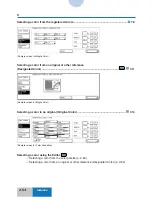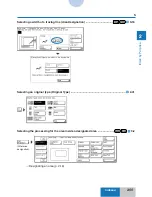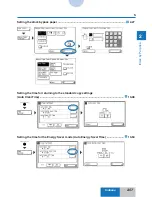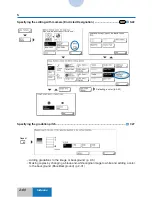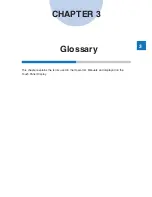
3-6
References
Nega/Posi
Normally, a photographic image is positive and a film image is negative. Between these two
types of images, the Nega/Posi function creates an image from the other.
When this function is applied, the hue and gradations of an image are reversed. For example,
when magenta 70% is subjected to Nega/Posi, the result is green 30%.
8-2,
1-28
Offset Plate Original
A function which makes a copy in black monochrome each for cyan, magenta, yellow, and
black from a color original. Thus, four copies are made from a single color original.
11-33,
1-37
One Touch Color
A mode in which the following color adjustments can be easily performed.
• Increase the color saturation to generate vivid hues (Vivid Colors).
• Decrease the color saturation to generate subdued tones (Tranquil Colors).
• Decrease the density to generate lighter tones (Lighten Image).
• Increase the density to generate heavier tones (Darken Image).
• Increase the density in the low-density area to reproduce the portion that tends to appear as
white (Highlight Reproduction).
• Make copies in sepia color (Old-fashioned Photo Image).
6-22
Original
Refers to the entire area of the sheet to be copied. The original contains the image and the
background.
N-O
Summary of Contents for COLOR SYSTEM 110
Page 10: ...CHAPTER 1 Visual Index This chapter shows sample copies made with the respective functions 1...
Page 75: ...2 26 Indexes From the previous page I...
Page 83: ...2 34 Indexes From the previous page M Color Tone Adjustment...
Page 85: ...2 36 Indexes From the previous page M Color Tone Adjustment...
Page 87: ...2 38 Indexes Making copies from large size negative film 4 78 After the shading is complete M...


